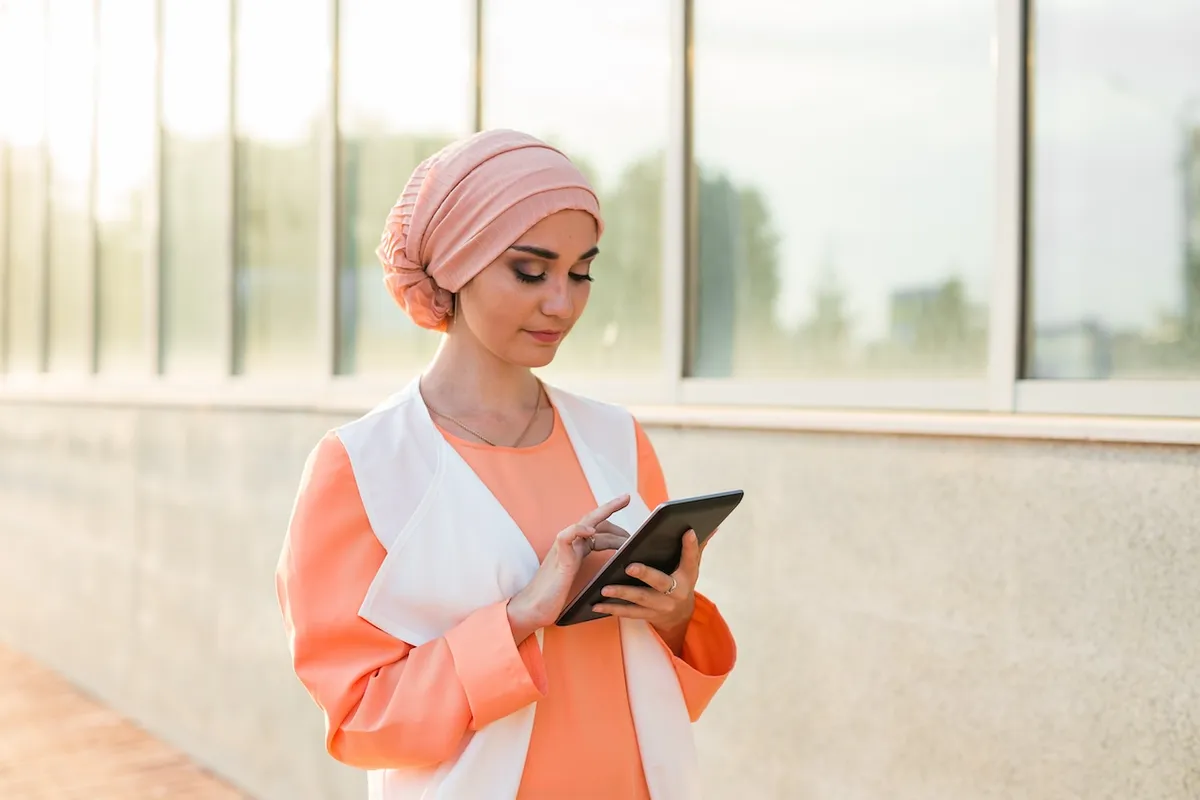
Planning an interfaith wedding can be a challenge. Couples often struggle to blend two different faith traditions into one ceremony. Our guide offers steps to create meaningful interfaith wedding vows that honor both beliefs and reflect shared values.
Let's make your vows memorable.
Key Takeaways
- Planning interfaith wedding vows early and talking openly helps blend traditions.
- Use resources like Rabbi Devon A. Lerner's book for tips on combining faith elements.
- Including special readings, rituals, or symbols from both cultures makes vows unique.
- Religious leaders or interfaith guides can offer advice on respecting both beliefs.
- Writing personal vows or mixing traditional ones showcases each partner's heritage.
Understanding the Importance of Interfaith Wedding Vows
Interfaith wedding vows represent both traditions and reflect shared values. They honor individual beliefs and create unity in a marriage.
Representation of both traditions
Blending two different religious traditions in a wedding ceremony shows respect and honor towards both faiths. It is about finding common ground while celebrating the uniqueness of each tradition.
A successful multifaith ceremony requires careful planning to ensure that both religions are represented equally, without one overshadowing the other. This balance helps create a unified celebration that reflects the couple's shared values and beliefs.
Couples can look into resources like Rabbi Devon A. Lerner's book, "Celebrating Interfaith Marriages: Creating Your Jewish/Christian Ceremony," for guidance on incorporating elements from both faiths seamlessly.
Utilizing such guides offers insights into blending religious traditions effectively, ensuring that family mindsets and cultural customs from both sides feel acknowledged during the ceremony.
This approach fosters an atmosphere of inclusion and unity, laying a strong foundation for the couple’s future together.
Reflection of shared values
Interfaith wedding vows allow for the reflection of shared values between two distinct religious traditions. This representation is essential in honoring both faiths equally without overshadowing one another.
Understanding and respect for each other's religious traditions are crucial to achieving a ceremony that celebrates the unity of love while embracing the diversity of beliefs within the couple’s union.
Rabbi Devon A. Lerner's book, "Celebrating Interfaith Marriages: Creating Your Jewish/Christian Ceremony," provides valuable insights for interfaith couples seeking to incorporate shared values into their wedding vows.
Honoring individual beliefs
In an interfaith wedding, it's essential to honor each person's beliefs with respect and equality. By acknowledging and incorporating elements from both traditions into the ceremony, the couple can create a meaningful and inclusive experience for themselves and their families.
This approach embraces diversity, allowing each individual to feel represented and valued on this special occasion.
Furthermore, couples can seek guidance from religious leaders or interfaith resources to facilitate open communication and understanding between differing beliefs. By doing so, they can navigate the complexities of blending two faiths in a way that respects the unique perspectives and values held by each partner.
Tips for Creating Interfaith Wedding Vows
Start the process early and communicate openly with your partner to blend both traditions meaningfully. Seek advice from religious leaders or interfaith resources for guidance in creating vows that reflect unity and respect.
Start early and have open communication
Begin planning your interfaith wedding vows well in advance to allow time for thoughtful consideration and respectful collaboration. Open communication between you and your partner is essential to ensure that both faiths are equally represented and honored in the ceremony.
Respectfully discussing each other's religious traditions can lead to a meaningful blend of cultural elements, reflecting shared values while honoring individual beliefs. Seeking guidance from religious leaders or interfaith resources can provide valuable insights into creating a harmonious union of two different faiths.
Understanding and respecting each other's religious backgrounds are crucial in planning an interfaith wedding that celebrates love, unity, and diversity.
Laying the foundation early by openly communicating about blending two different faiths allows for meaningful collaboration without overshadowing one tradition over the other. Starting early provides ample time to incorporate significant readings, rituals, or multicultural symbols, thus symbolizing equality in representation of both religions during the ceremony.
Incorporate meaningful elements from both traditions
Blending both traditions requires thoughtful consideration and respect for each other's beliefs. Elements from each tradition, such as special readings, rituals, or multicultural symbols, can be integrated into the wedding ceremony to honor and celebrate both faiths.
Rabbi Devon A. Lerner’s book, "Celebrating Interfaith Marriages: Creating Your Jewish/Christian Ceremony," offers guidance on blending Jewish and Christian elements in interfaith weddings.
By incorporating meaningful elements from both traditions, couples can create a beautiful and inclusive ceremony that reflects their shared values while respecting individual beliefs.
Seek guidance from religious leaders or interfaith resources
Consult with religious leaders or interfaith resources to gain insight and advice. Understand the significance of each tradition for a balanced representation. Rabbi Devon A. Lerner's book, "Celebrating Interfaith Marriages: Creating Your Jewish/Christian Ceremony," can provide valuable guidance for blending faiths in an interfaith wedding.
Planning an interfaith wedding that respects both faiths requires understanding and respect for each other's religious traditions, ensuring equal representation without overshadowing either one.
Couples can also utilize available multifaith wedding guides and related searches include Catholic interfaith wedding ceremony, Jewish pre-wedding traditions, and unique spiritual wedding ceremony ideas.
Ideas for Personalizing Interfaith Wedding Vows
Include special readings or rituals, write your vows or blend traditional ones, and incorporate multicultural symbols to make your interfaith wedding vows truly unique. Read on for more inspiration on how to create meaningful interfaith wedding vows.
Including special readings or rituals
To add depth to interfaith wedding vows, incorporating special readings or rituals from both traditions can be meaningful. These could include passages from religious texts, poems, or cultural rituals that hold significance for the couple.
For example, integrating a traditional Hindu blessing with a Christian prayer can symbolize the unity of two individuals and their families.
Multifaith wedding ceremonies often incorporate unique rituals such as the lighting of unity candles, handfasting ceremonies, or breaking bread together as symbols of union and harmony within diversity.
Writing your own vows or blending traditional vows
Consider writing your own vows or blending traditional vows to reflect both partners' beliefs and values. This can include incorporating meaningful elements from each faith tradition, such as readings, rituals, or multicultural symbols.
It's essential to start early and have open communication while seeking guidance from religious leaders or interfaith resources to ensure that the vows are respectful and inclusive of both traditions.
By personalizing the vows in this way, couples can create a ceremony that truly represents their unique love story while honoring their diverse backgrounds.
When crafting your wedding vows, it’s important to remember that they should equally represent both partners' faiths without overshadowing one another. Seek inspiration from Rabbi Devon A.
Incorporating multicultural symbols
Incorporating multicultural symbols into the wedding ceremony can add a beautiful touch of diversity and inclusivity. By including elements such as unity candles, cultural garb, or traditional music from both backgrounds, couples can honor and celebrate their different heritages while symbolizing their union as one.
Embracing multicultural symbols in an interfaith wedding also reflects the couple's shared beliefs and values.
The use of henna designs, Chinese tea ceremonies, or Native American blessings are meaningful ways to infuse diverse cultural traditions into the wedding vows. Such symbols create a powerful visual representation of love that transcends boundaries and unites people from different backgrounds in a joyous celebration.
Conclusion: Celebrating Love and Unity through Interfaith Wedding Vows
Expert Opinion:
Celebrating Love and Unity through Interfaith Wedding Vows
Dr. Maya Patel, a renowned interfaith counselor with over 15 years of experience in multicultural wedding ceremonies. She holds a Ph.D. in Religious Studies from Harvard University and has published numerous articles on interfaith marriage.
According to Dr. Patel, the outlined key features offer valuable insights for couples navigating interfaith marriages, effectively promoting harmony and understanding through meaningful vows that honor both traditions.
Safety, ethics, and transparency considerations are paramount in Dr. Patel's view. Certification and compliance with regulations ensure the guide's reliability while honest disclosure fosters trust among users seeking guidance for their special day.
For everyday use or specific contexts, Dr. Patel recommends incorporating elements gradually to build unity authentically rather than rushing the process.
In evaluating the guide, Dr. Patel acknowledges its comprehensive approach but suggests caution in blending religious symbols to avoid unintentional offense to either faith tradition.
Summing up her analysis, Dr. Patel recommends this thorough guide as an essential tool for couples committed to weaving together diverse faiths into a harmonious union.
RelatedRelated articles



